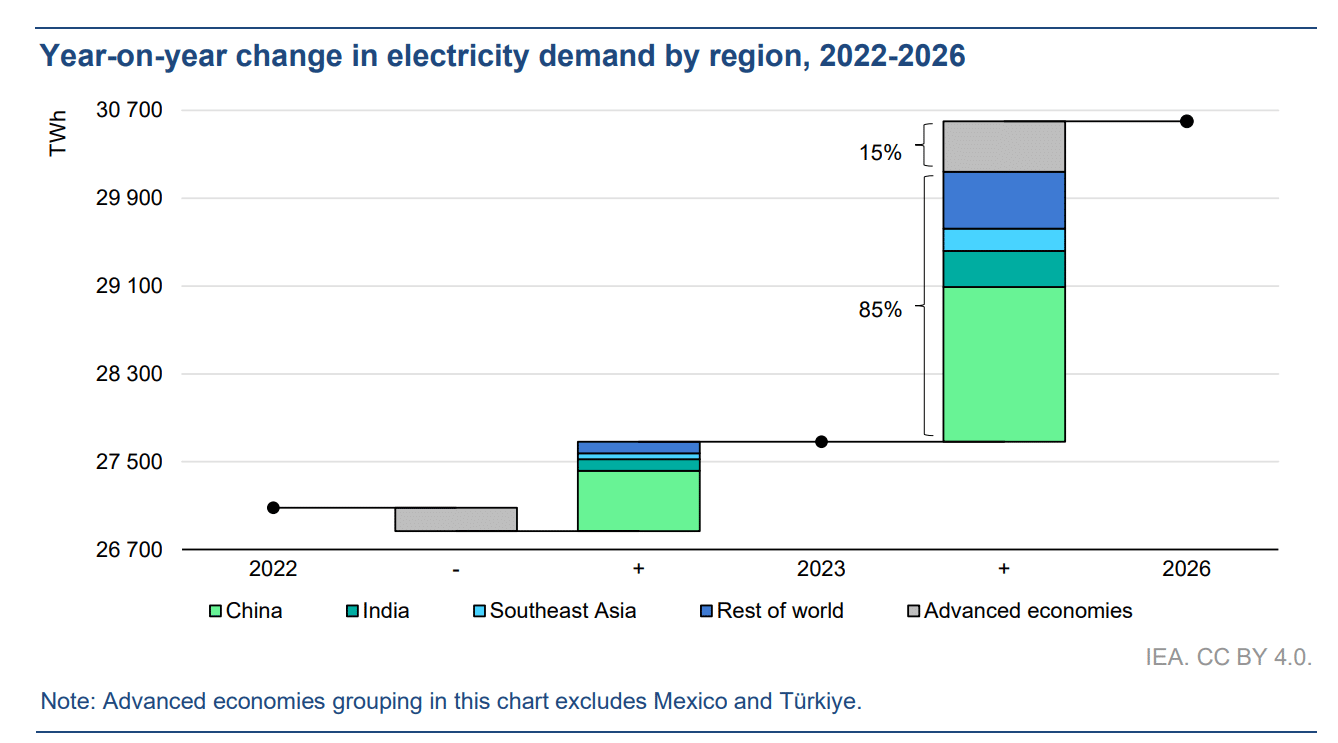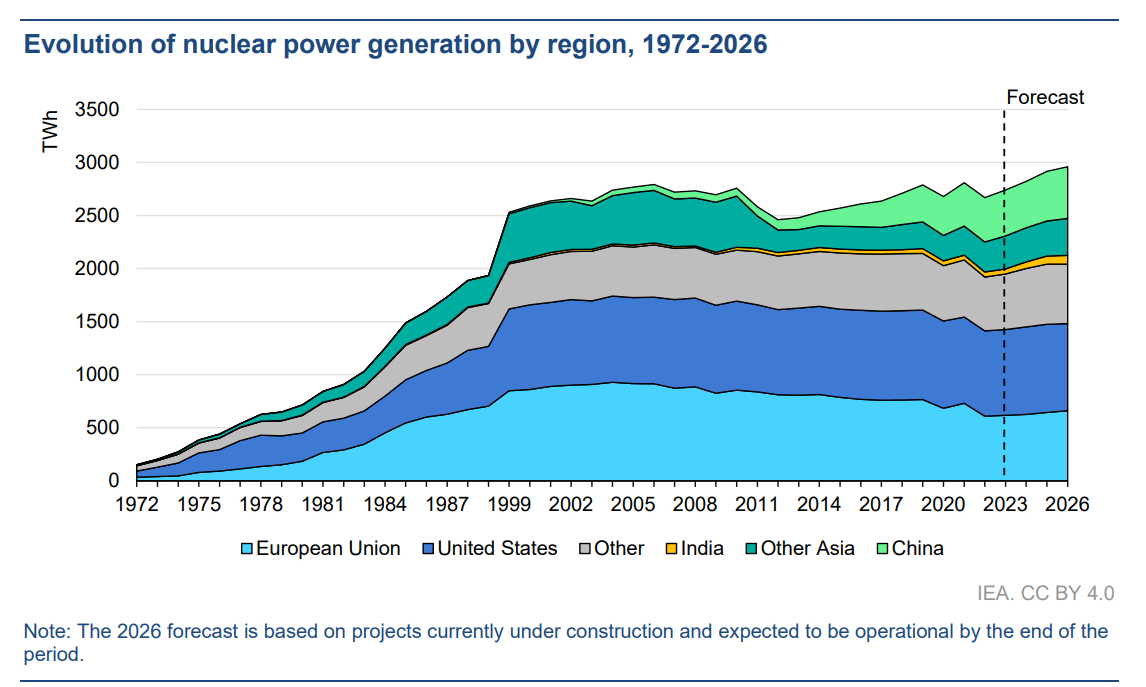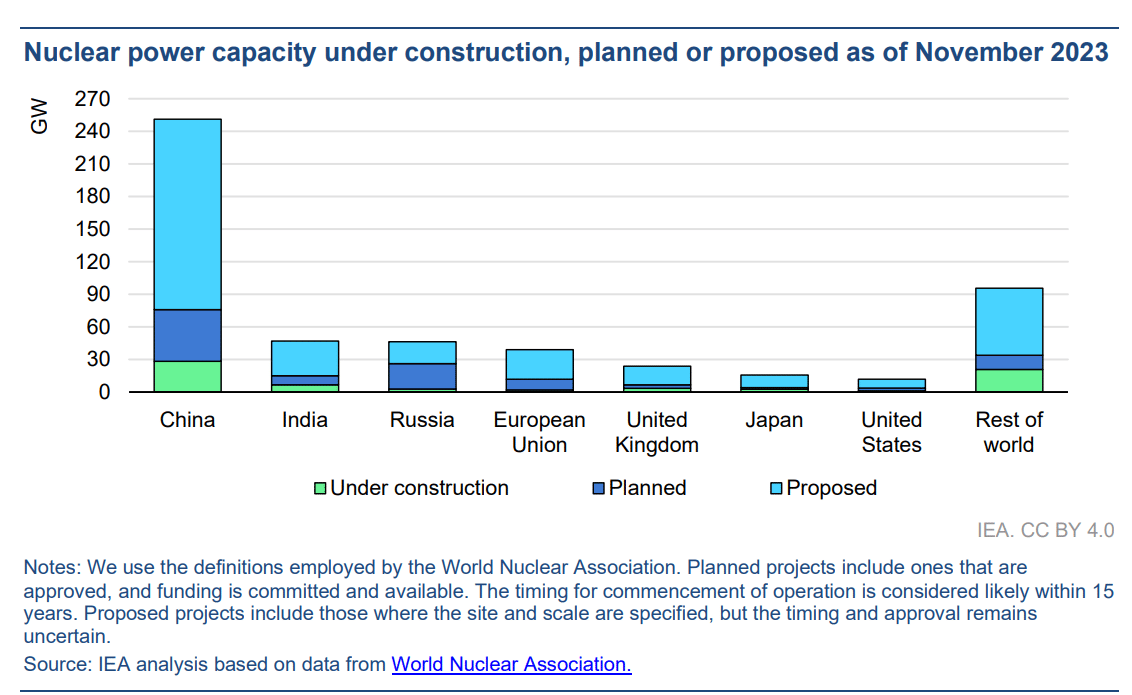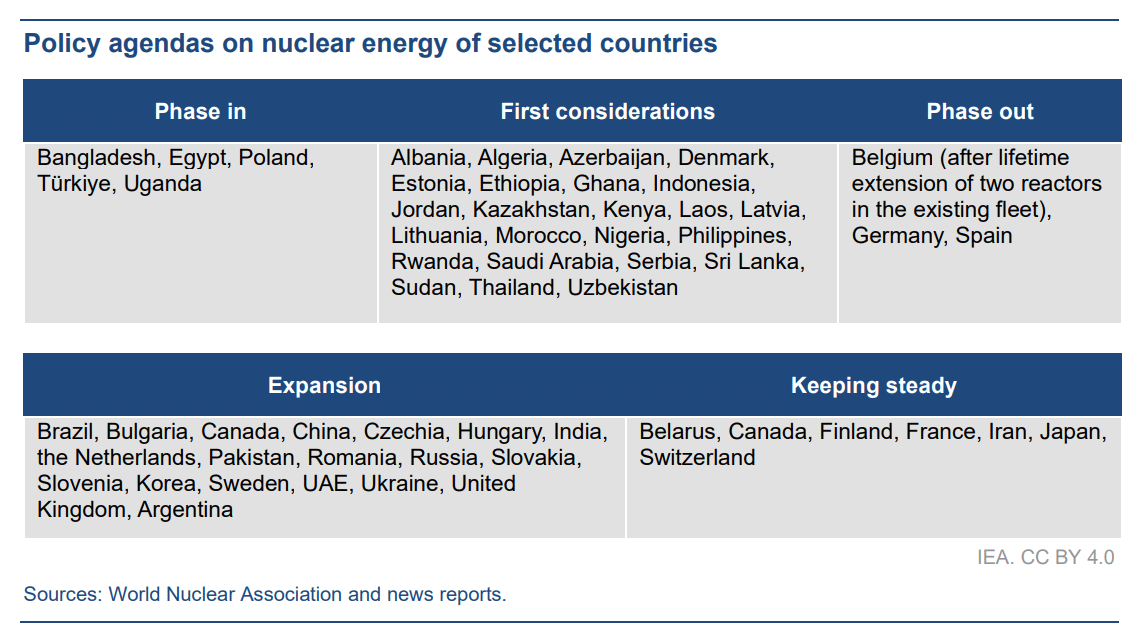In 2025, nuclear power generation is poised to reach an all-time high next year, says the International Energy Agency (IEA), due to increased investments in reactors to facilitate the transition to a low-carbon global economy. This forecast marks a resurgence of nuclear, bolstering efforts to reduce global carbon emissions.
This surge in nuclear power aligns with the shift towards a low-carbon economy, where electricity demand is projected to rise. The transition is fuelled by the adoption of electric vehicles, heat pumps, and various low-carbon industrial processes that rely on electricity rather than traditional oil and gas sources.
Concurrently, renewable energy is projected to surpass coal as a primary power source in the early months of the upcoming year, according to IEA data.
Nuclear Renaissance: Reaching Historic Peaks in 2025
Nuclear power plant output is projected to increase by around 3% in both the current year and the next. It would reach 2,915TWh and surpass the previous peak of 2,809TWh in 2021, according to the report.
The IEA also anticipates an additional 1.5% growth in 2026, driven by the commissioning of new reactors in China and India.
The report further highlights the collective impact of expanding nuclear power and the rapid growth of renewable sources. Wind, solar, and other clean energy sources are expected to contribute significantly, with renewables accounting for about a third of global electricity generation by early next year.
This projection would displace fossil fuels from the electricity system. The agency also expects low-emission sources to meet the growing power demand over the next few years. This would lead to a record low share of global supply delivered by fossil fuel generators, at 54% in 2026.


IEA’s Executive Director, Fatih Birol, underscored the significance of these trends in reducing carbon dioxide emissions from the power sector. The sector is currently the largest emitter globally.
Birol attributed the positive developments to the substantial momentum behind renewables. This particularly involves the increasingly cost-effective solar energy and the resurgence of nuclear power, which is on track to reach historic highs by 2025. He said that:
“This is largely thanks to the huge momentum behind renewables, with ever cheaper solar leading the way, and support from the important comeback of nuclear power. While more progress is needed, and fast, these are very promising trends.”
Global Nuclear Expansion: 29 GW by 2026
Between 2024 and 2026, an additional 29 GW of new nuclear capacity would come online globally. Over half of them would be in China and India.
There’s also anticipations on the commencement of commercial operations in new nuclear plants across various regions. Add to this the recovery of the French nuclear sector and anticipated restarts in Japan. Overall, the outlook for global nuclear generation foresees a nearly 10% increase in 2026 compared to 2023.


In 2022 and 2023, numerous countries strategically prioritized the introduction or expansion of nuclear power as a central component of their climate policy objectives, igniting a substantial resurgence of global interest in nuclear energy.
The IEA’s updated Net Zero Roadmap indicates a more than 2x increase in nuclear energy by 2050. This serves as a complement to the deployment of renewables and alleviating the strain on critical mineral supplies.
While a minority of European countries are contemplating phasing out nuclear energy, several emerging economies and some advanced nations are actively planning to introduce or expand nuclear energy generation. The current growth in nuclear power generation is predominantly concentrated in Asia.
During COP28, a significant development occurred as more than 20 countries joined forces to sign a collective declaration aiming to triple nuclear power capacity by 2050. If globally implemented, this commitment would involve adding 740 GW of nuclear capacity to the existing stock of 370 GW.
As of November 2023, the World Nuclear Association reported that 68 GW was actively under construction. Moreover, an additional 109 GW is in the planning stage and a substantial 353 GW proposed.


While these figures indicate substantial growth potential, achieving the declared objective by 2050 would need an extra 210 GW. That’s even when all the planned and proposed projects are successfully realized.
Leaders of Nuclear Growth: 50% of New Capacity
China and India jointly represent more than half of the anticipated 29 gigawatts of new nuclear capacity.
China, in particular, has experienced rapid growth in nuclear technology, elevating its generation share from 5% in 2014 to 16%. The country is aspiring to increase its installed nuclear capacity from approximately 56 GW to 70 GW by 2025.
Furthermore, the IEA notes that both China and Russia are expanding their influence in the nuclear sector. These two nations provide the technology for 70% of the reactors currently under construction.
The IEA has further observed a renewed interest in nuclear energy in Europe and Americas, but nuclear projects in China are experiencing fewer delays compared to those in the former regions. Overall, here’s how nuclear energy fits into the policy agenda of selected countries.


The International Energy Agency’s projections signal a notable resurgence in nuclear power generation, reaching an unprecedented high in 2025. With a 3% increase in output, nuclear energy is set to play a crucial role in the global transition to a low-carbon economy, complementing the growth of renewables. This forecast underlines nuclear power’s integral position in shaping the future energy landscape.
- SEO Powered Content & PR Distribution. Get Amplified Today.
- PlatoData.Network Vertical Generative Ai. Empower Yourself. Access Here.
- PlatoAiStream. Web3 Intelligence. Knowledge Amplified. Access Here.
- PlatoESG. Carbon, CleanTech, Energy, Environment, Solar, Waste Management. Access Here.
- PlatoHealth. Biotech and Clinical Trials Intelligence. Access Here.
- Source: https://carboncredits.com/nuclear-power-generation-to-break-global-records-in-2025-iea-predicts/



